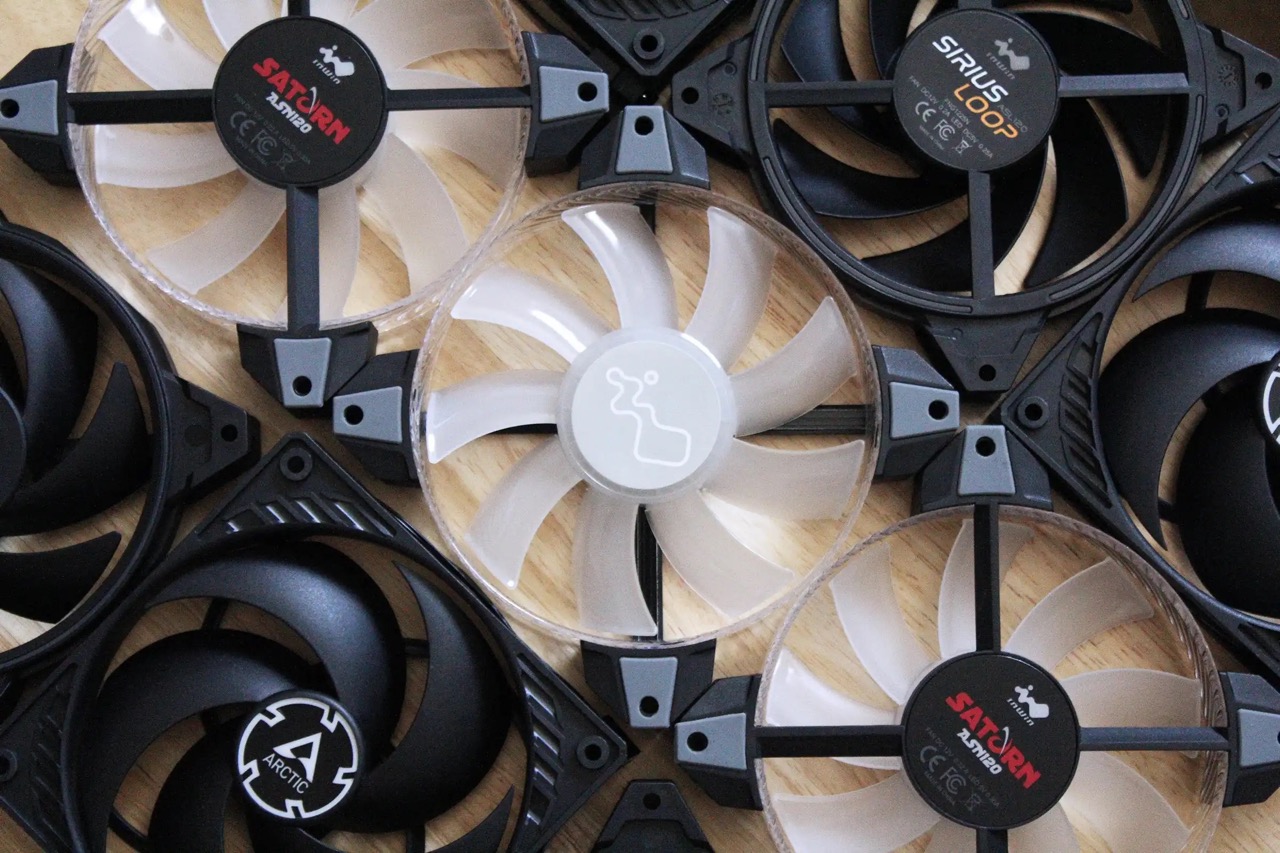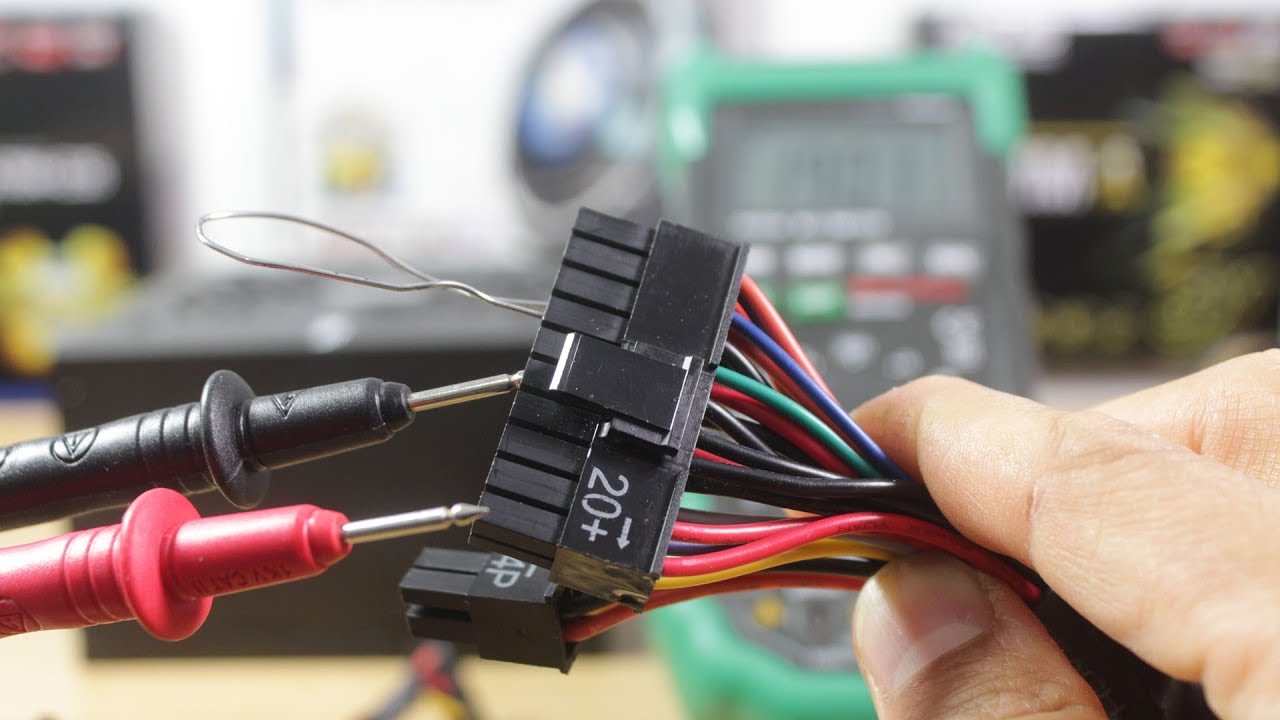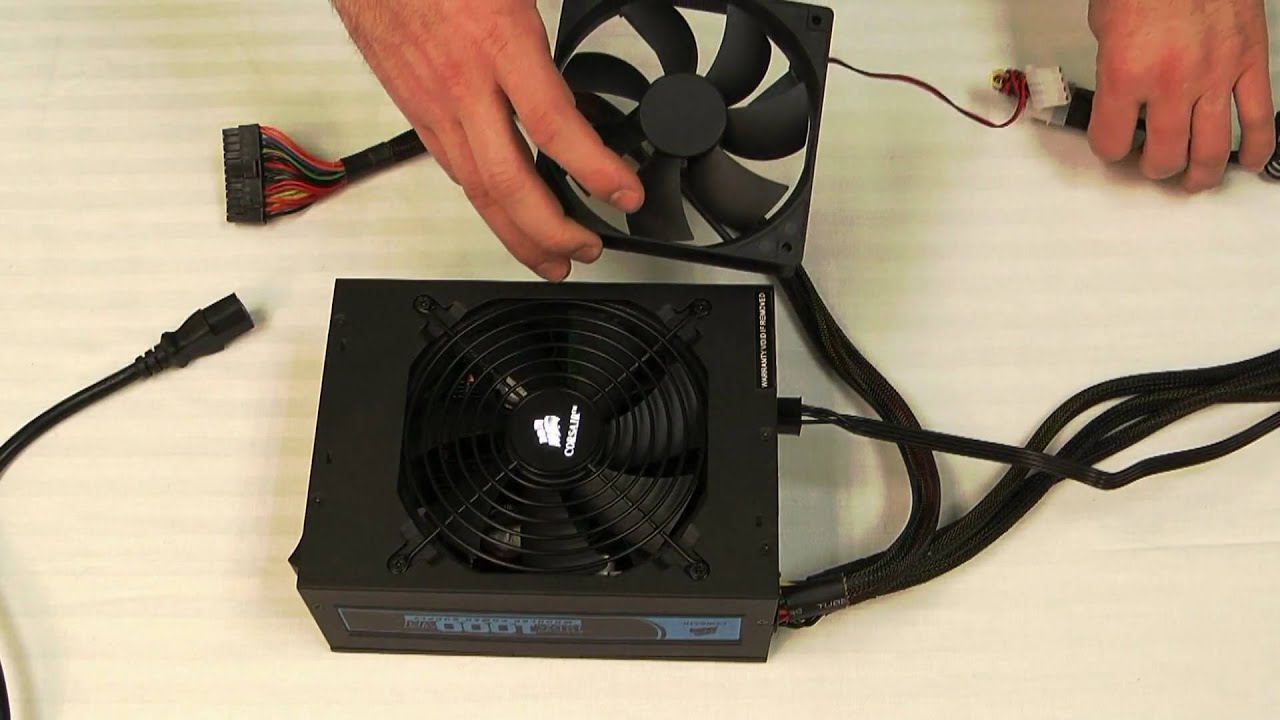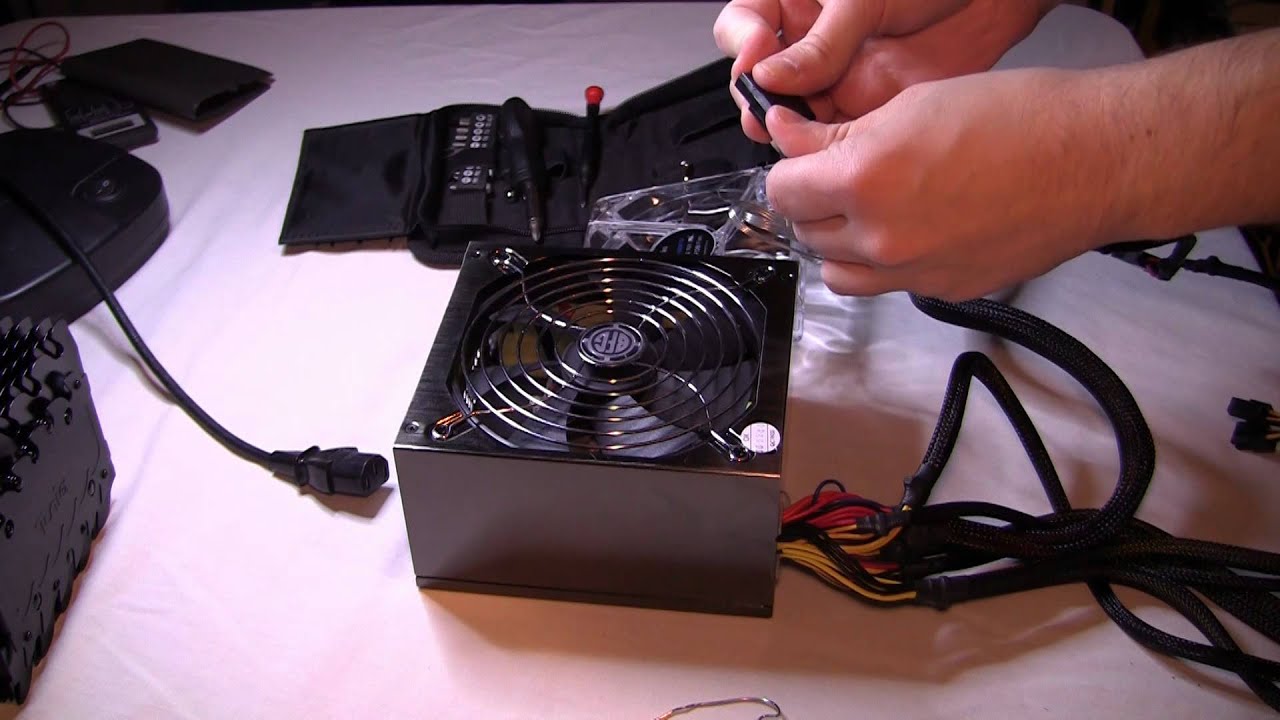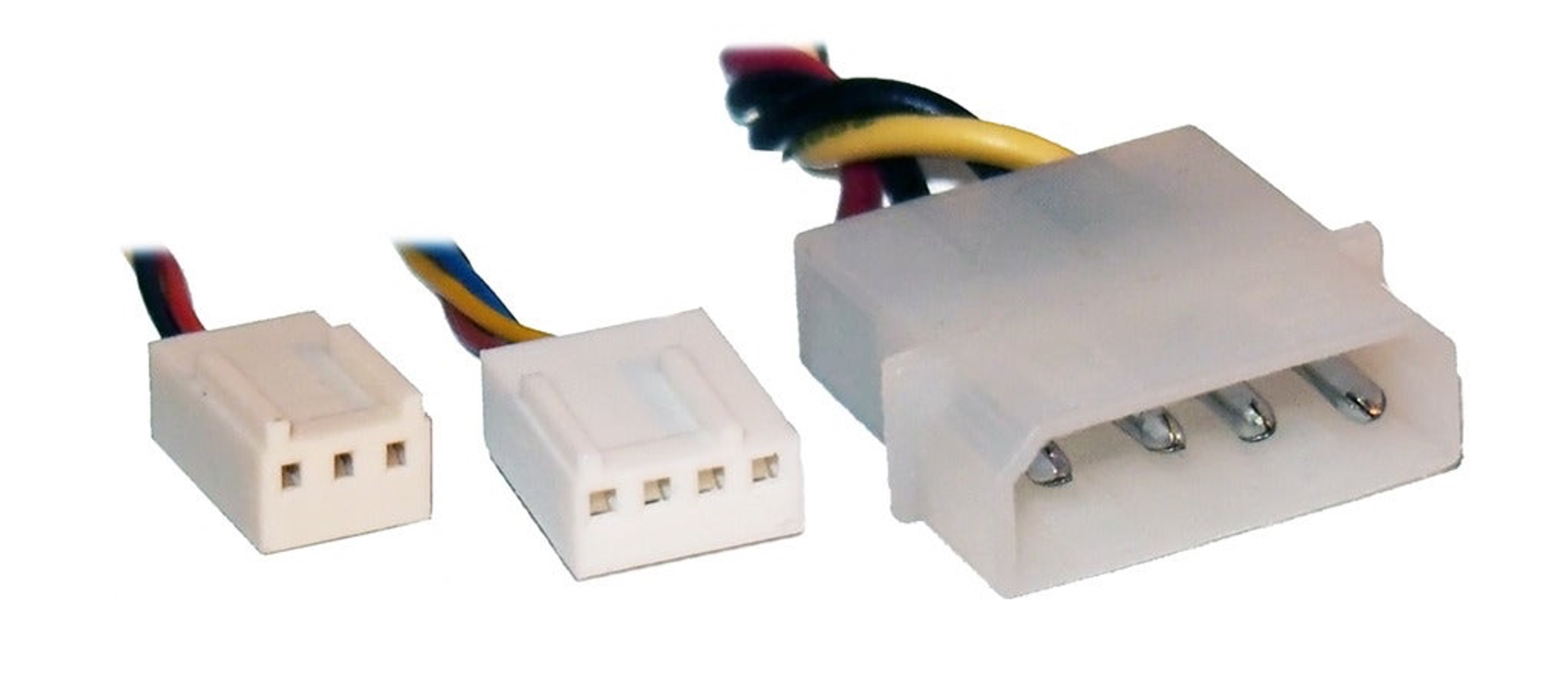Introduction
Case fans play a critical role in maintaining optimal airflow and temperature within a computer case. They help dissipate heat generated by various components such as the CPU, GPU, and power supply. However, not all case fans operate at the same voltage. It is important to know the voltage rating of your case fans to ensure compatibility and proper functioning.
In this article, we will guide you through the process of determining the voltage of your case fans. We will explore different methods that you can use, including reading the fan label, using a multimeter, and checking the motherboard specifications. By following these steps, you will be able to accurately identify the voltage rating of your case fans and make informed decisions regarding their installation and operation.
Understanding the voltage of your case fans is crucial for several reasons. Firstly, it helps you match the voltage requirements of your fans with the available power sources. Using fans with incorrect voltage can result in underperformance or even damage to the fan or motherboard. Secondly, knowing the voltage rating enables you to choose the right fan controller or motherboard headers that provide the correct voltage. This ensures optimal fan speed control and noise reduction. Lastly, identifying the voltage allows you to select appropriate replacement fans or upgrade existing ones with compatible options.
Whether you are a computer enthusiast, a DIY builder, or just curious about the specifications of your case fans, this guide will provide you with the necessary knowledge and steps to determine the case fan voltage. Let’s dive in and explore the methods for finding out the voltage rating of your case fans.
Why is voltage important for case fans?
Voltage is a crucial factor to consider when it comes to case fans. It determines the amount of power that is supplied to the fan, which directly impacts its speed and performance. Here are a few reasons why voltage is important for case fans:
1. Fan speed control: The voltage rating of a case fan determines its maximum speed. By adjusting the voltage, you can regulate the fan’s RPM (rotations per minute) and effectively control the airflow and cooling performance. Lower voltage slows down the fan, reducing noise output, while higher voltage increases the fan speed for better cooling efficiency.
2. Noise management: Running case fans at the optimal voltage helps strike a balance between cooling performance and noise level. If the voltage is too low, the fan may struggle to cool effectively. Conversely, if the voltage is too high, the fan may produce excessive noise. By knowing the voltage rating of your case fans, you can choose the right voltage to maintain a quiet and efficient system.
3. Compatibility: Different fans operate at different voltage ratings. It is essential to ensure that the voltage supplied to the fan matches its required voltage range. Using the wrong voltage can lead to performance issues or even damage to the fan or motherboard. Understanding the voltage compatibility ensures seamless integration between the fan and the power source, preventing any potential problems.
4. Expansion and customization: Knowing the voltage of your case fans opens up possibilities for expansion and customization. It allows you to plan for future upgrades and additions, such as fan controllers or RGB lighting systems. By considering the voltage requirements of your fans, you can make informed decisions about the compatibility and scalability of your cooling setup.
5. Troubleshooting: In some cases, issues with case fans may arise due to voltage fluctuations or incorrect voltage settings. By understanding the voltage requirements of your fans, you can troubleshoot any problems related to fan speed, cooling performance, or noise. This knowledge empowers you to address issues effectively and ensure the smooth operation of your computer system.
Considering these factors, it becomes evident that voltage is a fundamental aspect of case fan functionality. It directly impacts fan speed, noise levels, compatibility, customization, and troubleshooting. Now that we understand the importance of voltage for case fans, let’s explore different methods to determine the voltage rating of your case fans in the upcoming sections.
Step-by-step guide to determine case fan voltage
Now that you understand the significance of voltage for case fans, let’s delve into the step-by-step process of determining the voltage rating of your case fans. There are several methods you can use, depending on the information available and your preferred approach. Follow these steps to accurately identify the voltage of your case fans:
1. Method 1: Reading the fan label
- Locate the case fan label or sticker on the fan itself.
- Check for any voltage-related information, such as the operating voltage or voltage range. It is usually listed in volts (V) or represented as a voltage range (e.g., 12V ±10%).
- Note down the voltage information for later reference. If there is no voltage information or if it is illegible, proceed to the next method.
2. Method 2: Using a multimeter
- Ensure that your computer is turned off and unplugged from the power source.
- Select the “DC Voltage” setting on your multimeter.
- Identify the fan cables that connect to the motherboard or power supply.
- Place the black probe of the multimeter on a ground connection, such as a metal part of the case or the motherboard grounding pin.
- Touch the red probe of the multimeter to each fan cable while the system is powered on (if applicable).
- Observe the multimeter’s reading, which indicates the voltage supplied to the fan. Make a note of the voltage for future reference.
3. Method 3: Checking the motherboard specifications (if the fan is connected to the motherboard)
- Refer to the user manual or manufacturer’s website for your motherboard.
- Look for information regarding the supported voltage range for case fans.
- Compare the motherboard’s voltage range with the fan’s voltage rating to ensure compatibility.
By following these step-by-step methods, you can determine the voltage rating of your case fans accurately. Remember to exercise caution when working with computer components and always prioritize safety by following proper protocols. Having the correct voltage information enables you to make informed decisions regarding fan speed control, compatibility, and troubleshooting.
Method 1: Reading the fan label
One of the simplest and most straightforward ways to determine the voltage rating of your case fan is by reading the fan label or sticker. Many case fans have this label prominently displayed on the fan itself, providing valuable information about its specifications, including the voltage. Follow these steps to utilize this method:
- Locate the case fan label or sticker on your fan. It is usually positioned on the back or side of the fan.
- Take a closer look at the label and search for any voltage-related information. This information might be listed as the operating voltage or voltage range.
- Note down the voltage information for future reference, ensuring to include the unit of measurement (volts, denoted as V).
- If you cannot find any voltage information or if it is difficult to read, do not worry. You can explore other methods to determine the voltage of your case fan, as explained in the subsequent sections.
Reading the fan label is a quick and convenient way to identify the voltage rating of your case fan. It provides the necessary information to ensure compatibility with your power source and other components. However, it is important to note that not all case fans have readily visible or well-labeled voltage information. In such cases, you may need to rely on alternative methods to determine the voltage, such as using a multimeter or checking the motherboard specifications.
Now that you are familiar with the first method of reading the fan label, let’s move on to explore another method of determining the voltage of your case fan.
Method 2: Using a multimeter
If you are unable to find voltage information on the fan label or if you want to double-check the accuracy, you can use a multimeter to measure the voltage supplied to your case fan. Here’s a step-by-step guide on how to use a multimeter for this purpose:
- Before you begin, make sure your computer is turned off and unplugged from the power source. Safety should always be the top priority when working with electrical components.
- Set your multimeter to the “DC Voltage” setting. This allows you to measure the direct current voltage that powers your case fan.
- Identify the fan cables that connect to your motherboard or power supply. These cables usually come bundled together and have distinctive colors such as black and red.
- Place the black probe of the multimeter on a ground connection. This can be a metal part of the computer case or the grounding pin on the motherboard. This establishes a reference point for your voltage measurements.
- Gently touch the red probe of the multimeter to each of the fan cables, one at a time, while the system is powered on (if applicable). Take note of the voltage reading displayed on the multimeter for each cable.
- The voltage reading on the multimeter indicates the voltage supplied to the specific fan cable you are testing. This voltage corresponds to the voltage rating of the case fan.
- Record the voltage reading for future reference, ensuring to include the unit of measurement (volts, denoted as V).
Using a multimeter allows you to directly measure the voltage supplied to your case fan. It provides an accurate way to determine the voltage rating and ensures compatibility with your power source. Remember to exercise caution when working with electrical components, and always follow safety guidelines to avoid any mishaps.
If you encounter any challenges or are unable to use a multimeter, don’t worry. There is one more method we will explore to determine the voltage of your case fan, which involves checking the motherboard specifications. This method can be particularly useful if your fan is connected to the motherboard.
Method 3: Checking the motherboard specifications
If your case fan is connected directly to the motherboard, you can determine its voltage rating by checking the motherboard specifications. This method is especially useful when the fan label does not provide any voltage information or if you want to verify the compatibility of the fan with your motherboard. Follow these steps to utilize this method:
- Refer to the user manual of your motherboard. If you don’t have the manual, you can usually find it on the manufacturer’s website.
- Look for the section that details the specifications of the motherboard.
- Within the specifications, search for information related to fan headers or connectors.
- Check if the motherboard specification list includes the supported voltage range for case fans.
- Compare the voltage range specified by the motherboard with the voltage rating of your case fan.
- Ensure that the fan’s voltage falls within the supported range to ensure compatibility.
By checking the motherboard specifications, you get valuable insight into the supported voltage range for case fans. This information helps you ensure that the voltage supplied to your case fan matches the voltage requirements specified by the motherboard. It is important to note that not all motherboards provide detailed voltage information for case fans. In such cases, it is best to consult the user manual or contact the manufacturer for clarification.
Using this method allows you to have a clearer understanding of the compatibility between your case fan and your motherboard. It ensures that the fan operates within the recommended voltage range, promoting optimal performance and longevity.
After exploring these methods, you should now have a good understanding of how to determine the voltage rating of your case fan. The three methods discussed – reading the fan label, using a multimeter, and checking the motherboard specifications – provide different ways to gather the necessary information for making informed decisions regarding your case fan setup.
Common case fan voltage ratings
Case fans come in various voltage ratings, and it is important to be familiar with these common voltage ranges when selecting or replacing fans for your system. Here are some of the most common case fan voltage ratings:
1. 12V: This is the most common voltage rating for case fans. Many standard case fans operate at 12 volts, which is the voltage supplied by most computer power supplies. These fans typically provide a good balance between airflow and noise levels, making them suitable for a wide range of applications.
2. 5V: Some case fans are designed to operate at lower voltages, such as 5 volts. These fans are often utilized in situations where low noise output is a priority, such as in HTPC (Home Theater PC) setups or silent-focused builds. While they may provide less airflow compared to 12V fans, they help maintain a quieter system environment.
3. Variable voltage: Certain case fans come with the ability to operate at different voltage ranges. These fans often include built-in fan controllers or can be connected to external fan controllers that allow you to adjust the voltage and, consequently, the fan speed. Variable voltage fans provide the flexibility to fine-tune the cooling performance and noise levels based on your specific needs.
4. Other voltages: Occasionally, you may come across case fans with different voltage ratings, such as 9V or 24V. These fans are less common but are sometimes used in specialized applications or industrial settings. It’s essential to check the specifications of these fans to ensure compatibility and proper functioning with your system.
When selecting or replacing case fans, it is crucial to consider the voltage rating and match it with the available power sources, such as the motherboard headers or fan controllers. Using fans with the incorrect voltage can result in performance issues, excessive noise, or even damage to the fan or other components.
By being aware of the common case fan voltage ratings, you can make informed decisions about the suitable fans for your system, taking into account factors like cooling requirements, noise preferences, and compatibility.
Now that you have familiarized yourself with common case fan voltage ratings, you are well-equipped to choose the right fan for your system or ensure compatibility when replacing existing fans.
Conclusion
Determining the voltage rating of your case fans is an essential step in optimizing your computer’s cooling performance and ensuring compatibility with your system. By following the methods outlined in this article, you can accurately identify the voltage of your case fans and make informed decisions regarding installation, fan speed control, and customization.
The three methods discussed – reading the fan label, using a multimeter, and checking the motherboard specifications – provide different ways to determine the voltage rating. Reading the fan label is often the simplest and most straightforward method, as it provides direct information about the voltage on the fan itself. If the information is not available or unclear, using a multimeter allows you to measure the voltage supplied to the fan cables. Checking the motherboard specifications can be particularly useful if the fan is connected to the motherboard and offers insights into the supported voltage range.
Understanding the significance of voltage for case fans, such as its impact on fan speed control, noise levels, compatibility, and customization, enables you to optimize the performance and lifespan of your cooling setup. Whether you are a computer enthusiast, DIY builder, or looking to troubleshoot fan-related issues, knowledge of case fan voltage is vital.
Remember to exercise caution when working with electrical components and always prioritize safety. Consult the user manual or contact the manufacturer if you have any doubts or concerns about the voltage requirements of your case fans.
By utilizing the methods outlined in this guide, you can confidently determine the voltage rating of your case fans and ensure their seamless integration into your computer system. So, go ahead and equip yourself with accurate voltage information to enhance the cooling efficiency and overall performance of your computer.







